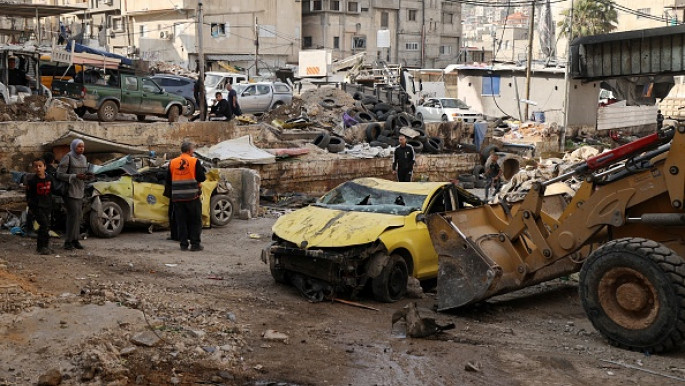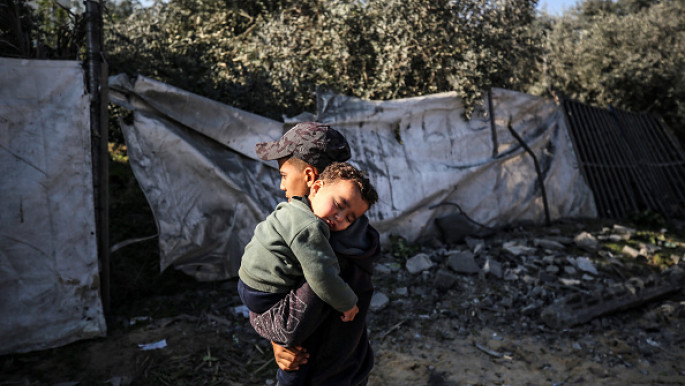The cold period of "al-Arbaeeniyyah" starts in late December and ends at the beginning of February. Gazans are suffering from a shortage of winter clothing.
Palestinians are suffering from a shortage of winter clothing in Gaza amid 40 of the coldest days of the year in the strip.
The cold period of "al-Arbaeeniyyah" starts in late December and ends at the beginning of February.
Nearly two million displaced Palestinians have been forced to flee their homes and seek shelter in the southern and middle parts of Gaza after repeated Israeli evacuation orders and Israel's crushing blockade and military campaign.
Gaza's markets, specifically in the centre of the strip and in the area of Rafah and Khan Younis in the south, are witnessing a severe shortage of clothes.
The weather was moderate when the Gaza war began on 7 October, but the winter has since kicked in. Many Palestinians are seeking refuge from Israel's indiscriminate war in shelters and tents.
Gaza residents have also been suffering from a shortage of food and water, and interruptions to the electrical supply and telecommunications.
There have recently been youth initiatives to distribute clothes to the displaced, but many of the efforts stopped because of a lack of the availability of goods.
Ismail Tayeh, who was displaced to the city of Deir al-Balah, said winter clothes are not available in the markets even if there is money to buy them, since what is on offer is very scarce and doesn't meet the needs of all the displaced.
The head clothing merchants' syndicate, Tamer al-Akhras, said there was a "big scarcity" of winter clothes.
He said merchants did not prepare for winter or bring sufficient quantities to meet the market's needs.
He added that merchants were waiting for heavy winter clothing to come through the border crossings, but this did not happen due to the outbreak of the war.
This pushed many to search for used clothing to address the escalating crisis.
Israel's brutal war on Gaza has so far killed more than 21,800 people. Places of worship, ambulances, hospitals, and residential buildings have been attacked.














